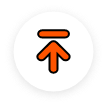今天睿丁君为大家带来小学英语复习资料,纯干货分享! 考前假期常备(背)噢~
01/ 大写字母的运用
1.句个字母大写。
2.人名、国名、节日名、语言名、组织名等专有名词的字母大写。
3.星期、月份的字母大写。
4.特指的学校、政府、、委员会或涉及具体人名的称呼或职位,字母大写。
5.某些特殊词汇、缩略词、标志语、特殊用语等,字母大写或全大写。
6.句中要强调的部分通常全大写。
7.诗的每一行字母要大写。
02/ 名词复数的变化规则
1.一般情况下,直接加s,
如:book-books, bag-bags, cat-cats, bed-beds.
2.以s,x,sh,ch 结尾,加es,
如:bus-buses, box-boxes, watch-watches.
3.以辅音字母加y 结尾,变y 为i, 再加es,
如:family-families, hobby-hobbies.
4.以f 或fe 结尾,变f 或fe 为v, 再加es,
如:thief-thieves, knife-knives.
5.以o 结尾,
加es,如:mango-mangoes.
加s,如:radio-radios,photo-photos.
6.不规则变化,
如:man-men,woman-women,child-children,foot-feet,tooth-teeth.
7.不可数名词
有:bread, juice, tea, coffee, water, rice 等。
(不可数名词 相对应的be 动词是is/was)
03/名词所有格表示人或物品所属关系时,就需要使用名词所有格。
名词所有格的构成有以下规 则:
1.一般情况下,在名词的末尾加’s 构成。
如:Tom’s book
2.以“-s”结尾的复数名词的所有格,只在其末尾加’。
如:our teachers’ books
3.表示几个人共同拥有的东西时,只在最后一个名字上加所有格。
如:Su Hai and Su Yang’s bedroom
04/ a, an 和the 的用法
1. 单词或字母的个读音是辅音读音:a book, a peach, a “U”.
单词或字母的个读音是元音读音:an egg, an hour, an “F”.
2.the 要注意的:
球类前面不加the,
乐器前面要加the,
序数词前面要加the。
05/ 人称代词和物主代词
一、人称代词主格及宾格
1、人称代词分为主格和宾格,主格和宾格区别:
主格和宾格汉语意思相同,但位置不同。
Eg:I(主格)"我"-- me (宾格)"我"
2、主格在陈述句中通常放句,宾格通常放在动词后或介词后,也就是说宾格,不放在句。
Eg :I have a new car.( I 主格)
Excuse me (me 宾格)
I ask him to go (him 宾格)
They sit in front of me (me 宾格)
3、主格(8个):I 我you你 he他 she她 it它 we 我们you 你们they他(她、它)们
宾格(8个):me我 you你 him 他her她 it它 us我们 you你们 them他(她、它)们
二、熟记人称代词和物主代词的绕口令
我是" I " ,你是“you", "he, she, it" 他,她,它" 我的“my”,你的"your", 他的"his", 她的"her"
主 格 I you he she it we you they
宾 格 me you him her it us you them
形 物 my your his her its our your their
名 物 mine yours his hers its ours yours theirs
06/ 形容词、副词的比较级
1.形容词的比较级:用于两者的比较。
(1)基本句式的构成:A(主格)+ be + 形容词的比较级 + than + B(宾格).
(2)表示一样的情况时用原级,结构是:as + 原级 + as
2.副词的比较级:
(1)基本句式的构成:
A(主格)+ 动词 + 副词的比较级 + than + B(宾格).
(2)表示一样的情况时用原级,结构是:as + 原级 + as
3.形容词、副词比较级的变化规则:
(1)单音节词末尾加er;
(2)单音节词如果以字母e 结尾,加r;
(3)重读闭音节词如果末尾只有一个辅音字母,须双写这个字母,再加er;
(4)以辅音字母加y 结尾,变y 为i,再加er;
(5)双音节和多音节词的比较级在原级前加more;
(6)不规则变化, 如:well-better, much/many-more。
07/ 基数词和序数词
1、特殊变化
one--first,
two--second,
three--third,
five--fifth,
nine--ninth,
twelve--twelfth,
twenty-twentieth,
forty-one--forty-first.
序数词前一定要加the。
2.基数词变成序数词的方法:
(1)直接在基数词词尾加上th,
如:seventh 第七,tenth 第十,thirteenth 第 十三;
(2)以y 结尾的基数词,变y 为ie,再加上th,
如:twentieth 第二十。
(3)不规则变化,
如:first , second 第二, third 第三,fifth 第五, eighth 第八,ninth 第九,twelfth 第十二。
(4)基数词“几十几”变为序数词时,表示“几十”的基数词不变,只把表示 “几”的基数词变成序数词,
如twenty-first 第二十一。
3.序数词的缩略形式是由阿拉伯数字和序数词的最后两个字母构成的,
如:1 st , 2 nd , 3 rd , 4 th 。
08/ 动词
一、be动词
1.口诀:
我用am, 你用are, is 用在他她它,复数全用are。
2.否定形式:
am not(没有缩写形式), is not=isn’t, are not=aren’t。
3.过去式:
am/is(was), are(were)。
二、助动词
1.do, does 用于一般现在时,does 用于第三人称单数,其余一律用do。
2.did 用于一般过去时。
3.它们的否定形式为:do not=don’t, does not=doesn’t. did not=didn’t.
三、情态动词
can,must,could,would,may,shall,should
1.情态动词后面用动词原形。
2.其否定形式是在情态动词的后面加not。
09/ 介词 in 的用法
1.用在某范围或某空间内,
如:in the desk
2.在一段时间内,
如:in the morning
3.以,用……方式,
如:in English in 和on 的区别:树上长出来的用on,不是树上长出来的则用in。
in, on, at 的区别:
in, on, at 都可以用来放在时间前面。
in 后面一般是morning,afternoon, evening,月份、年份、季节或者指某一段时间内;
on 用在具体某,如:on Sunday morning;
at 一般用在某个假期期间(不是指具体的某),它还可 以用在具体的时间,如:at Spring Festival, at five o’clock.
小学英语教材中出现的介词有:
in, on, from, of, by, about, for, under, behind, after, before, with, near, off, at, to, around, nearby 等。
10/ some /any用法
1、肯定句:
I have some toys in my bedroom.
2、一般疑问句和否定句中:
Do you have any brothers or sisters? He doesn’t have any pencils in his pencil case.
3、表示建议、请求等:
Would you like some juice? Can I have some stamps?
11/ there be 结构与have, has 的区别there be 结构:
1.there be 结构表示“某地存在着什么事物或人”。
在一般现在时中,there be 结构应该用there is 或there are 表示;
在一般 过去时中,there be 结构则应该用there was 或there were 表示。
2.主语是不可数名词或单数可数名词时用is(was),是复数时用are(were)。
3.there be 结构遵循就近原则。
4.在陈述句中为了强调地点,可将介词短语提到句。
5.否定句:在be 动词后面加not,如果句中有some,要变成any。
6.一般疑问句:把be 动词提到句,字母大写,句尾改成问号。
7.What is + 地点介词短语?(无论主语是单数还是复数都用is)
there be 结构与have, has 的区别:
there be 表示某地存在着什么事物或人;
have(has) 表示某物或人拥有某物。
12/ 疑问句
1、一般疑问句:
是指询问事实的句子,此类句子必须用“yes",或“no”来回答。
2、特殊疑问句:
以特殊疑问词 (what , where , who , which , when , whose , why , how等) 开头引导的句子。此类句子应该问什么就答什么,不能用“yes /no”来回答
3、疑问词的选择:
what (什么)
who (谁)
where (哪里)
whose (谁的)
why(为什么)
when(什么时候)
which(哪一个)
how old (多大)
how many (多少)
how much(多少钱)
13/ 陈述句
1、肯定句:
是指用肯定的语气来陈述的句子,如:
I'm a student. She is a doctor. He works in a hospital.
There are four fans in our classroom. He will eat lunch at 12:00. I watched TV yesterday evening.
2、否定句:
含有否定词或表示否定意义词的句子,如:
I'm not a student. She is not (isn't) a doctor.
He does not (doesn't) work in a hospital. There are not (aren't) four fans in our classroom.
He will not (won't) eat lunch at 12:00. I did not (didn't) watch TV yesterday evening.
(本文来源于网络,版权归原出处和作者所有)



